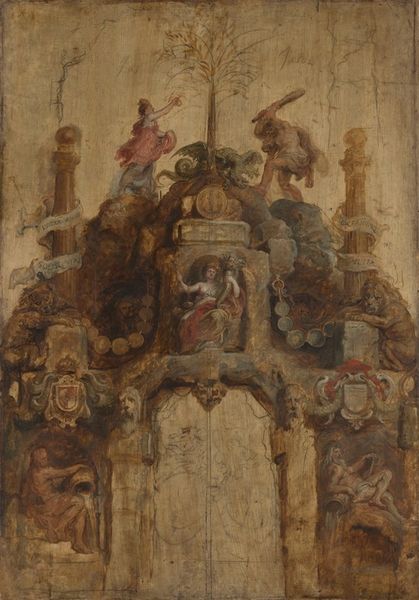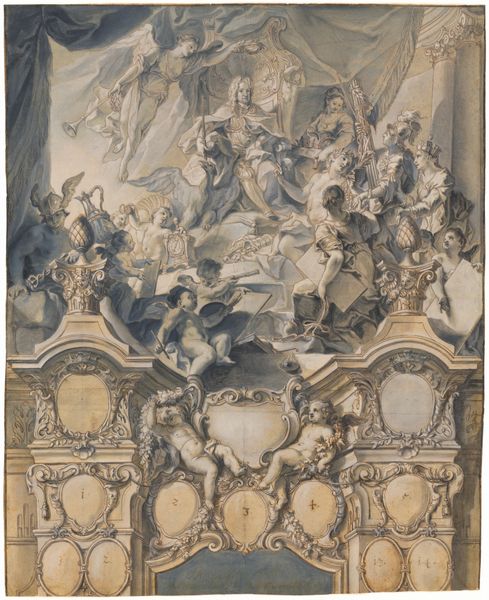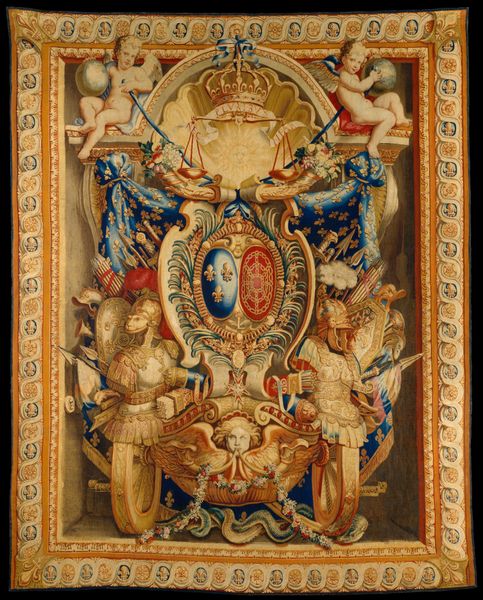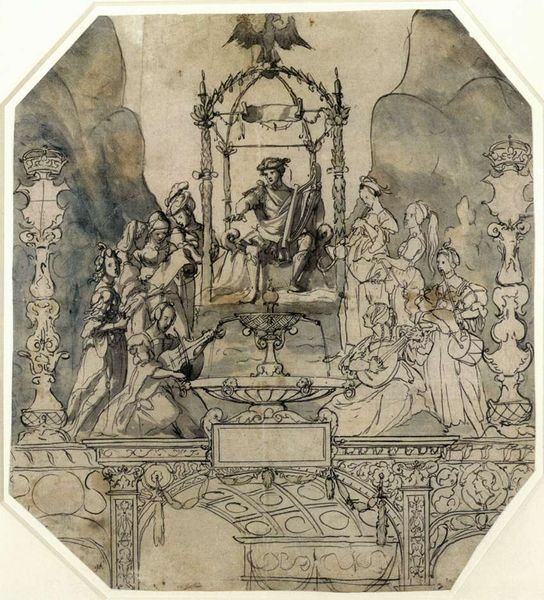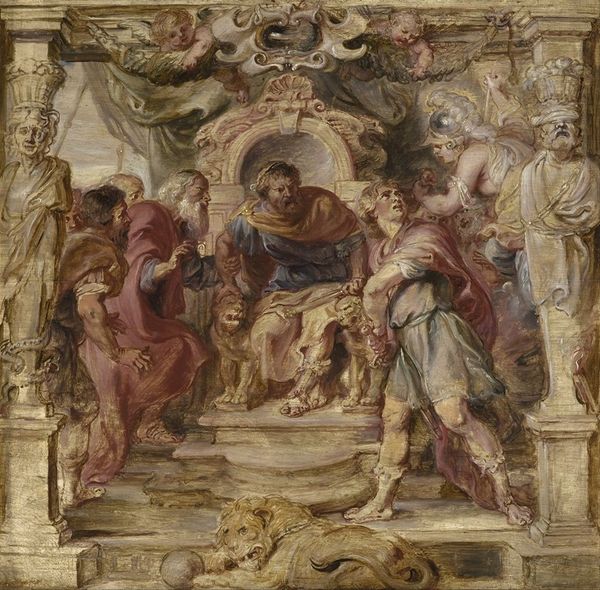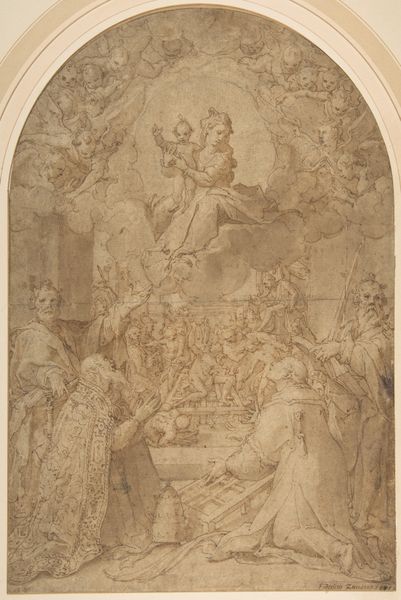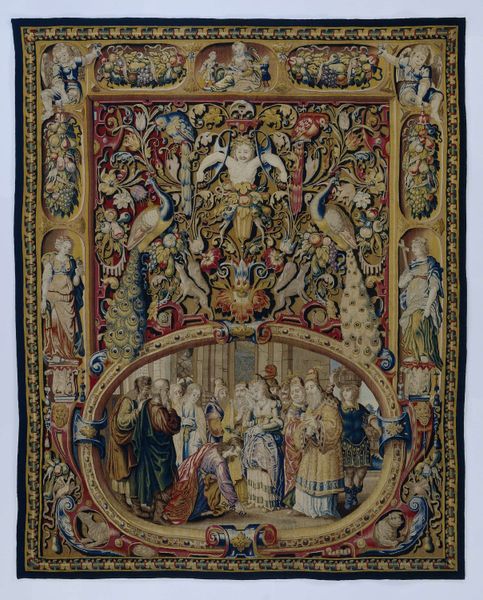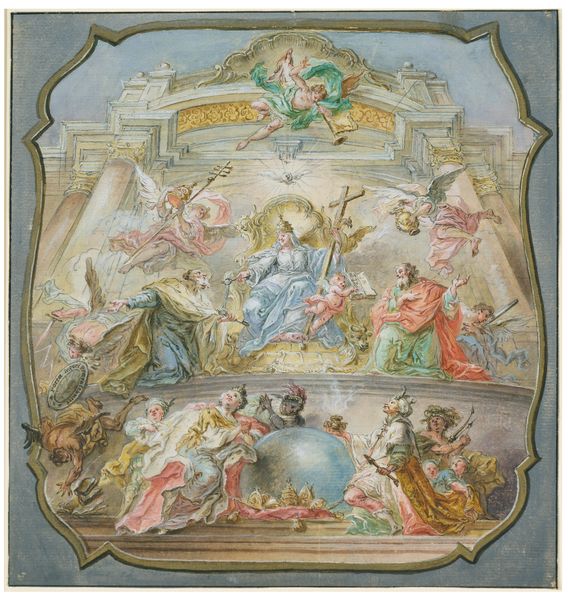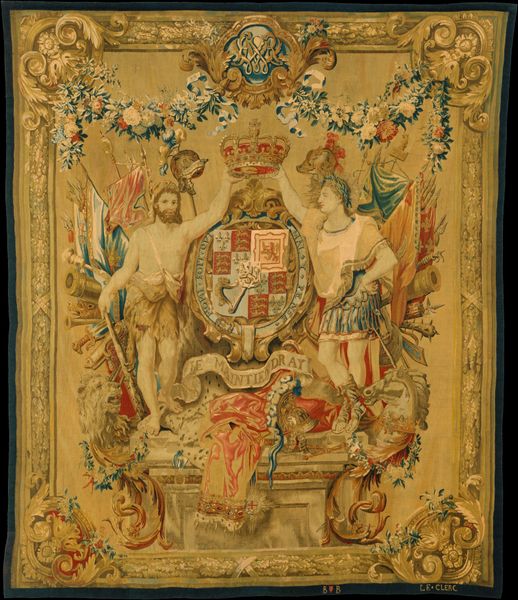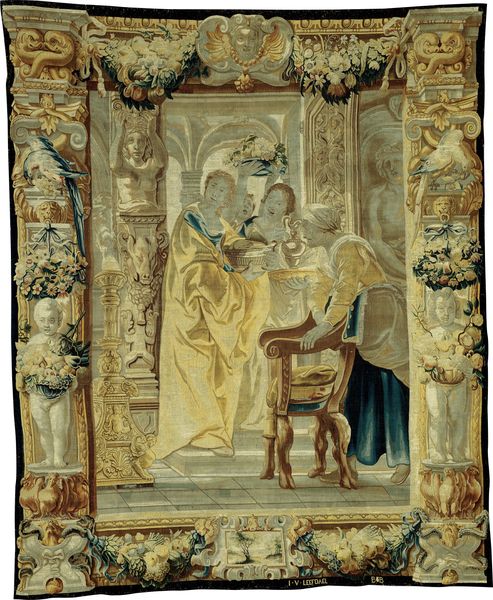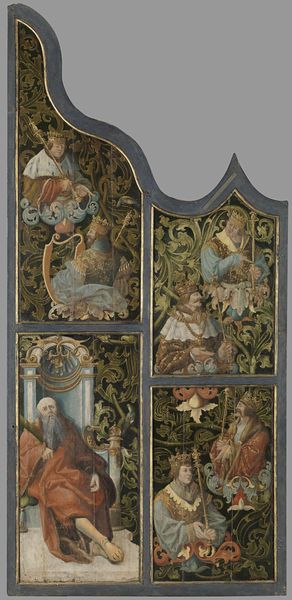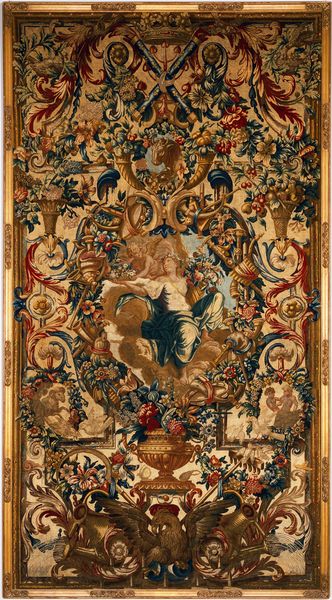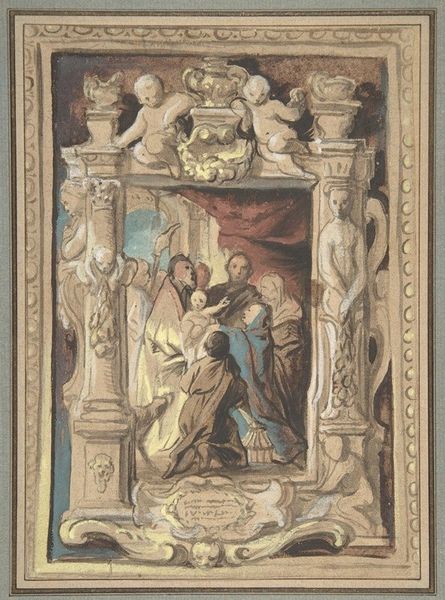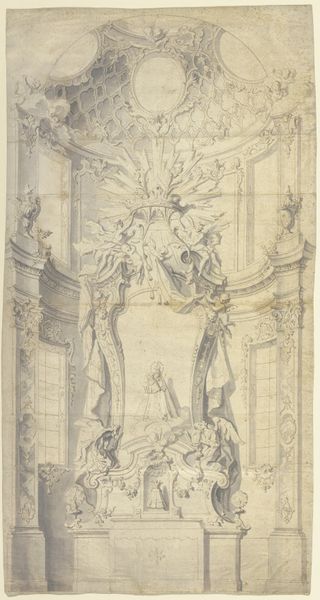
painting, oil-paint
#
allegory
#
baroque
#
painting
#
oil-paint
#
figuration
#
oil painting
#
mythology
#
history-painting
#
academic-art
Copyright: Public Domain: Artvee
Curator: This sketch by Peter Paul Rubens is entitled "Triumphal Chariot of Kallo," created in 1638, rendered with oil paint. What strikes you first about it? Editor: Its ambition, definitely. It feels both incredibly ornate and a bit...unfinished, almost like a dream sequence, caught mid-flight. The colors are muted, but the figures convey an impressive sense of dynamism. Curator: Indeed. Rubens often deployed sketches like these to visualize complex allegorical scenes. Considering the social and political backdrop of 17th-century Flanders, the sketch functions as propaganda, aimed at legitimizing power, and perhaps celebrating a specific military or political triumph, the exact details now obscured by time and lack of completion. Editor: I find it hard to separate the artwork from its implied setting—presumably for a ruler’s procession. What does a triumphal chariot signify outside of its immediate celebration of a certain political entity or victory? How might a contemporary viewer critically examine such imagery? Curator: We must acknowledge its roots in a visual culture that promoted absolutism. It’s necessary to contextualize it by discussing the relationship between art, patronage, and statecraft during the Baroque period. The display of flags is so prominent. Editor: Exactly! Looking through a lens of post-colonial studies, we might ask about the flags representing various nations – who benefitted from that 'triumph,' and at what cost to those subjugated under these nations? Is this merely a celebration, or is it implicitly justifying hierarchies and colonial ventures? The angels surrounding a sort of cartouche are reminiscent of present-day national symbols and flags on government buildings. Curator: It forces us to reflect upon our own relationship with monuments and visual markers of authority and their lasting influence on power dynamics within society. By revealing these social narratives we provide insights to deconstruct and engage with images that serve to assert influence. Editor: Absolutely. Considering it within a modern context allows us to reconsider those power dynamics as we explore how we can shape a more egalitarian iconography, making this work timeless. Curator: A very useful connection. It reveals how artworks, even incomplete ones, engage directly with prevailing power narratives across generations, creating a meaningful reflection on art and the forces that underpin cultural visibility. Editor: Agreed. Ultimately, that ongoing negotiation, the act of questioning what appears triumphant is perhaps art's most crucial offering.
Comments
No comments
Be the first to comment and join the conversation on the ultimate creative platform.
